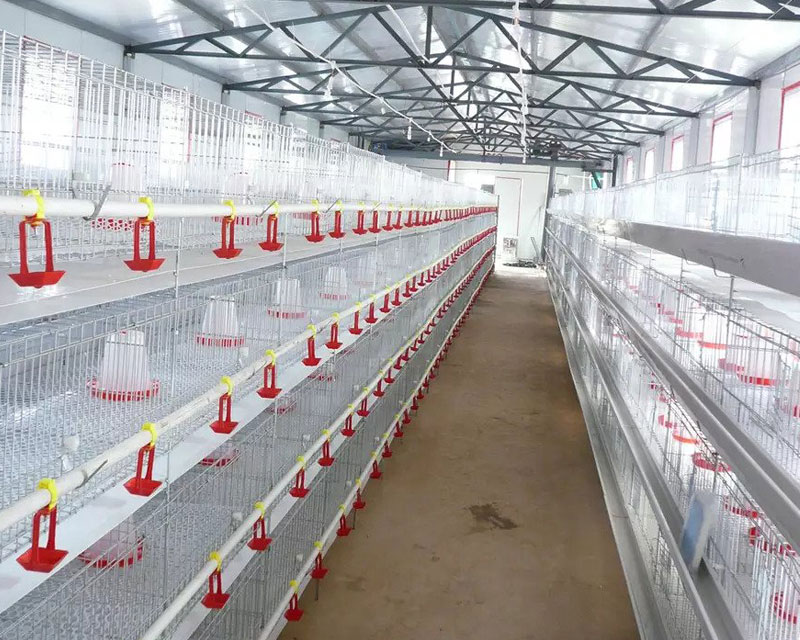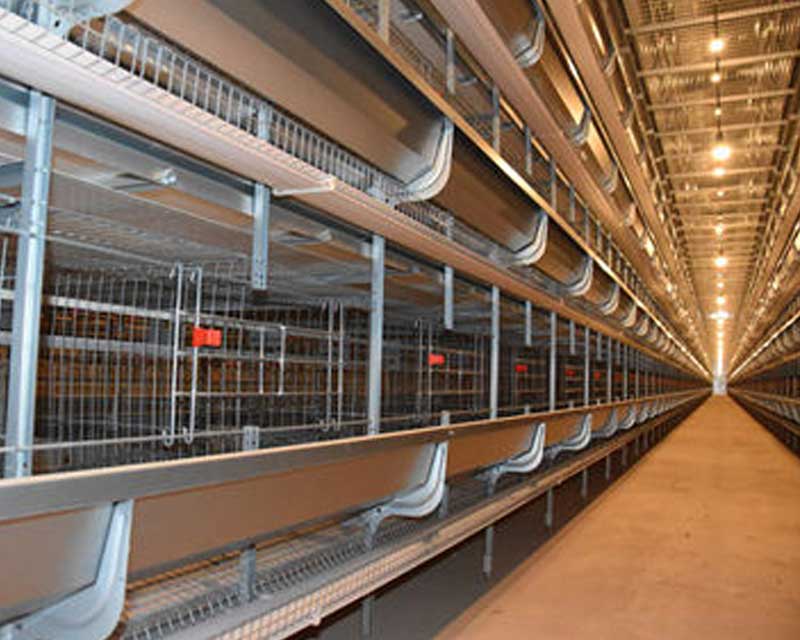How To Choose The Capacity Of A Cabinet Egg Incubator?
The cabinet egg incubator does mass hatching of poultry eggs, such as chicken, duck, and goose eggs, and plays a vital role in modern poultry farming and hatching businesses. Its most prominent advantages include improving hatching success rate, saving labor costs, enabling mass hatching, reducing risks, and standardizing management. It is crucial for small farms, medium-sized hatcheries, large hatching centers, and commercial incubation enterprises. When selecting a cabinet egg incubator, many aspects should be taken into consideration. Today, we will focus on the choice of capacity of a cabinet incubator.
.jpg)
Why is the capacity choice of the cabinet incubator so important?
Choosing a suitable capacity cabinet incubator is essential. It directly affects the hatching efficiency, cost control, management difficulty, and economic profits. A right choice of capacity can not only guarantee the hatching success rate and operation efficiency but also take costs and risks under control.
Too small capacities
- Each batch of hatching has a limited number of eggs, requiring frequent handling and turning, which increases the workload. The long intervals between batches result in unstable overall yields.
- The unit incubation cost is high because the fixed consumption is spread across each egg.
- Low investment, but poor scalability and high future upgrade costs.
Over large capacities
- If the scale of breeding is insufficient, the equipment cannot be fully utilized, resulting in a relative waste of energy consumption and operating costs.
- If management experience is insufficient, problems may arise in temperature and humidity control, ventilation uniformity, and egg-turning operations, which can significantly affect the hatching rate.
Key factors affecting the choice of cabinet incubator capacity
.jpg)
Farming Scale
Small-scale farmers or family farms: Suitable for small-capacity incubators (e.g., 500–1000 incubators), offering flexible operation and lower investment.
Medium- to large-scale farming bases or commercial hatcheries: Suitable for large-capacity incubators (e.g., 2000–5000 or more incubators), offering high batch hatching efficiency and low unit cost.
Egg Types and Sizes
Chicken, duck, and goose eggs differ in size, requiring capacity adjustments.
Some incubators support mixed incubation of multiple egg types, but larger eggs may require more space.
Site and Environmental Conditions
Land area, power capacity, and ventilation conditions limit the size of the available incubator.
In areas with large temperature differences or poor ventilation, dual-system or large-capacity incubators are recommended to ensure stability.
Operational Models
Self-incubation and self-raising: Multiple medium-capacity incubators can be selected for batch incubation and flexible operation.
Commercial incubation: High-capacity incubators are recommended to improve efficiency and reduce unit incubation costs.
Research or teaching: Smaller capacity incubators are more convenient for experiments and data recording.
Budget and Return on Investment
Limited initial budget: Small- to medium-capacity equipment can be selected to reduce investment pressure.
Long-term benefits: Large-capacity equipment has lower unit incubation costs and is more suitable for large-scale production.
Choosing the right capacity balances current needs and future expansion.
Batch Scheduling and Incubation Cycle
Calculate the required capacity based on the planned incubation quantity and cycle to ensure continuous supply and production efficiency.
Flexible capacity selection helps to stagger incubation periods and avoid resource waste.
Common Capacities for the cabinet incubators
.jpg)
The capacity for cabinet incubators varied, which can range from dozens to tens of thousands. Small cabinet incubators have capacities, take chicken eggs for example, like 88, 100, 200, 500, 800, 1000, 1800. (Just for simple reference, exact numbers are a little different) . A large incubator can hatch more chicken eggs, such as 2000,, 3000, 4000, 5000, 6000, 8000, 10000, etc.
The table below is a comparison between some typical capacities on aspects of applicable scenarios, features, and investment.
| Capacity Type | Applicable Scenarios | Features | Investment Range (USD) |
|---|---|---|---|
| 500 | Small farms/experimental use | Flexible, lightweight, low cost | 300-600 |
| 1000 | Family farming/startup incubators | Easy to operate, easily expandable | 500-900 |
| 2000 | Medium-sized incubation bases | High stability, high energy efficiency | 900-1500 |
| 5000 | Commercial incubators | High efficiency, centralized management | 1500-3000+ |
| 8000 | Large-scale incubators/incubated companies | High-efficiency batch incubation, intelligent control, energy saving, and consumption reduction | 3000–5000+ |
| 10000 | Mega-scale incubation center / Commercial incubation | Extremely high production capacity, fully automated management, suitable for continuous production | 5000+ |
FAMtech advises

Before selecting capacity, please clarify the following five core pieces of information, which will determine the size of the machine you need:
- Monthly/yearly hatching target: e.g., 8,000 eggs to hatch per month.
- Single-batch or multi-batch operation strategy: Preferring batch hatching at once or staggered hatching.
- Available site and power conditions: Site area, power capacity, and ventilation.
- Budget and expected payback period: One-time investment capacity and expected payback time.
- Management capabilities and staff skills: Are you able to manage large automated equipment, or do you need a simpler, easier-to-use model?
If you are a small- to medium-sized farmer, starting with a 500 egg incubator or a 1000 egg incubator is the most economical.
If you plan to expand production, you can choose a 2000 egg incubator or a 5000 egg incubator.
If you want to incubate eggs for others or operate commercially, we recommend a high-end, fully automatic, large-scale model.
Choosing the right capacity of cabinet egg incubator means achieving a high hatching rate and reduced costs, along with stable economic benefits. Contact us to get a specific suggestion for your needs. Or take a look at our product pages and then come back to us for the latest models and quotes.
FAQ
Q1: Should I buy a large hatchery all at once or multiple medium-sized hatcheries?
A: If your budget allows and you prioritize the lowest unit cost, a large hatchery is the best choice. If you want to diversify risk and operate flexibly, a combination of multiple medium-sized hatcheries is recommended.
Q2: Is the low hatching success rate due to capacity issues?
A: Not necessarily. Success rate depends more on temperature and humidity control, ventilation uniformity, operational procedures, and egg quality, not just capacity.
Q3: Will electricity costs increase significantly with a large hatchery?
A: Total energy consumption will increase, but energy consumption per egg usually decreases (economies of scale). The key is to choose equipment with a good energy efficiency design and to schedule batches appropriately.

 4 Tier H Type Broiler Cage Project In South Africa
4 Tier H Type Broiler Cage Project In South Africa Layer Cage Project In Cuba
Layer Cage Project In Cuba H Type Layer Cage Project In Southeast Asia
H Type Layer Cage Project In Southeast Asia A Type Layer Cage Installed In West Africa
A Type Layer Cage Installed In West Africa Nigeria H Type Layer Cage Project
Nigeria H Type Layer Cage Project H Type Layer Cage Installed In Togo
H Type Layer Cage Installed In Togo